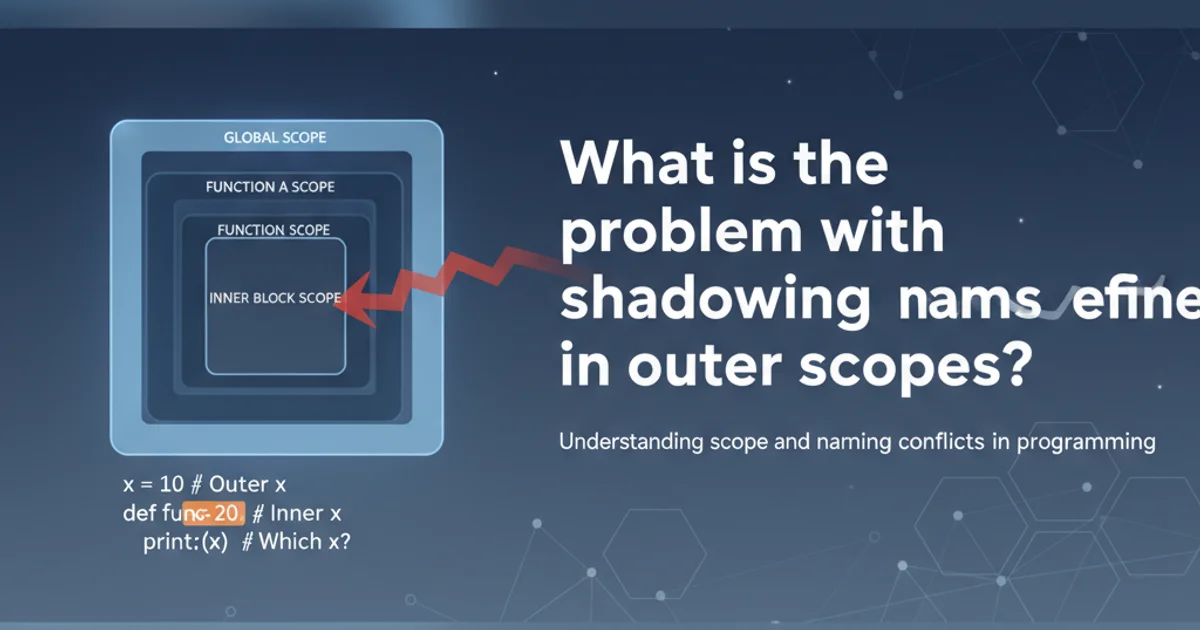python [:] notation and range
Categories:
Mastering Python's Slice Notation and Range Function

Unlock the power of Python's slice notation for efficient sequence manipulation and understand the versatile range() function for generating numerical sequences.
Python offers powerful and concise ways to work with sequences like lists, tuples, and strings. Two fundamental tools for this are slice notation (often referred to as the colon : operator) and the built-in range() function. While seemingly simple, mastering these can significantly improve your code's readability, efficiency, and conciseness. This article will delve into the intricacies of both, providing clear explanations and practical examples.
Understanding Python Slice Notation
Slice notation provides a flexible way to extract portions (slices) of sequences. It uses the colon : operator within square brackets [] and follows the general format [start:stop:step]. All three components are optional, offering various ways to specify the desired slice. Python's slicing is non-inclusive at the stop index, meaning the element at the stop index is not included in the slice.
my_list = [0, 1, 2, 3, 4, 5, 6, 7, 8, 9]
# Basic slicing: [start:stop]
print(my_list[2:7]) # Output: [2, 3, 4, 5, 6]
# Slicing from the beginning: [:stop]
print(my_list[:5]) # Output: [0, 1, 2, 3, 4]
# Slicing to the end: [start:]
print(my_list[6:]) # Output: [6, 7, 8, 9]
# Copying a list: [:]
new_list = my_list[:] # Output: [0, 1, 2, 3, 4, 5, 6, 7, 8, 9]
print(new_list)
# Slicing with a step: [start:stop:step]
print(my_list[1:9:2]) # Output: [1, 3, 5, 7]
# Reversing a list: [::-1]
print(my_list[::-1]) # Output: [9, 8, 7, 6, 5, 4, 3, 2, 1, 0]
Examples of various slice notation uses on a list.
-1 is the last element, -2 is the second to last, and so on.flowchart LR
subgraph Sequence S
idx0["0"] --> idx1["1"]
idx1 --> idx2["2"]
idx2 --> idx3["3"]
idx3 --> idx4["4"]
idx4 --> idx5["5"]
idx5 --> idx6["6"]
idx6 --> idx7["7"]
idx7 --> idx8["8"]
idx8 --> idx9["9"]
end
subgraph Slice [2:7]
S_2_7_start["Start Index: 2"] --> S_2_7_stop["Stop Index: 7 (exclusive)"]
end
subgraph Slice [::-1]
S_rev_start["Start: Default (end)"] --> S_rev_stop["Stop: Default (beginning)"]
S_rev_stop --> S_rev_step["Step: -1 (reverse)"]
end
idx2 -.-> S_2_7_start
idx6 -.-> S_2_7_stop
idx9 -.-> S_rev_start
idx0 -.-> S_rev_stop
S_2_7_start -- "Includes" --> idx2
S_2_7_start -- "Includes" --> idx3
S_2_7_start -- "Includes" --> idx4
S_2_7_start -- "Includes" --> idx5
S_2_7_start -- "Includes" --> idx6
S_2_7_stop -- "Excludes" --> idx7
S_rev_step -- "Result" --> "[9, 8, ..., 0]"Visualizing Python slice notation with start, stop, and step parameters.
The range() Function for Numerical Sequences
The range() function is a powerful and memory-efficient way to generate sequences of numbers. It's commonly used in for loops to iterate a specific number of times. range() generates numbers on demand, meaning it doesn't create a list of all numbers in memory, which is especially beneficial for very large sequences. It also follows a start, stop, step pattern, similar to slice notation.
# range(stop) - starts from 0, increments by 1, up to (but not including) stop
for i in range(5):
print(i, end=' ')
# Output: 0 1 2 3 4
print('\n')
# range(start, stop) - starts from start, increments by 1, up to (but not including) stop
for i in range(2, 8):
print(i, end=' ')
# Output: 2 3 4 5 6 7
print('\n')
# range(start, stop, step) - starts from start, increments by step, up to (but not including) stop
for i in range(1, 10, 2):
print(i, end=' ')
# Output: 1 3 5 7 9
print('\n')
# Using range with negative step
for i in range(10, 0, -1):
print(i, end=' ')
# Output: 10 9 8 7 6 5 4 3 2 1
print('\n')
# Converting range to a list (for visualization, not memory efficient for large ranges)
print(list(range(3, 10, 3))) # Output: [3, 6, 9]
Examples demonstrating the range() function's flexibility.
range() function returns a range object, which is an iterable. To see the actual numbers it generates, you often need to convert it to a list (e.g., list(range(5))) or iterate over it.Common Pitfalls and Best Practices
While slice notation and range() are powerful, understanding their nuances is key to avoiding common mistakes. Always remember the non-inclusive nature of the stop parameter for both. For range(), ensure your step value is appropriate for the start and stop values (e.g., a positive step for start < stop, and a negative step for start > stop).
my_string = "Python"
# Incorrect: Attempting to modify a string slice (strings are immutable)
# my_string[0:3] = "Jav" # This will raise a TypeError
# Correct way to 'modify' a string (create a new one)
new_string = "Jav" + my_string[3:]
print(new_string) # Output: Javython
# Common range error: infinite loop if step is wrong
# for i in range(0, 5, -1): # This loop will not run as 0 < 5 and step is negative
# print(i)
# Corrected negative step for decreasing sequence
for i in range(5, 0, -1):
print(i, end=' ')
# Output: 5 4 3 2 1
Illustrating common errors and correct usage for slices and ranges.